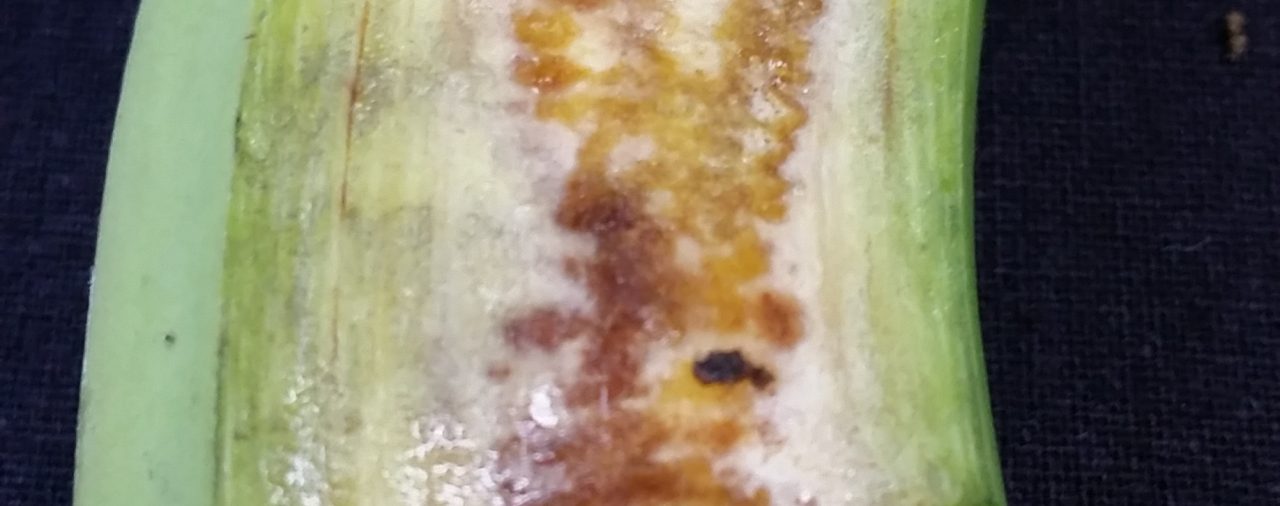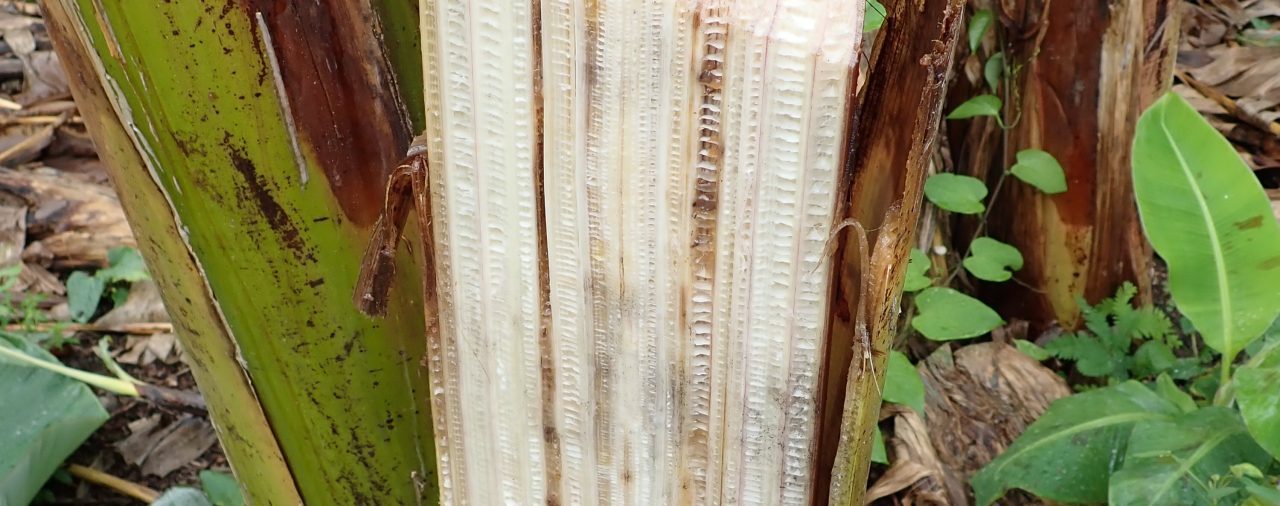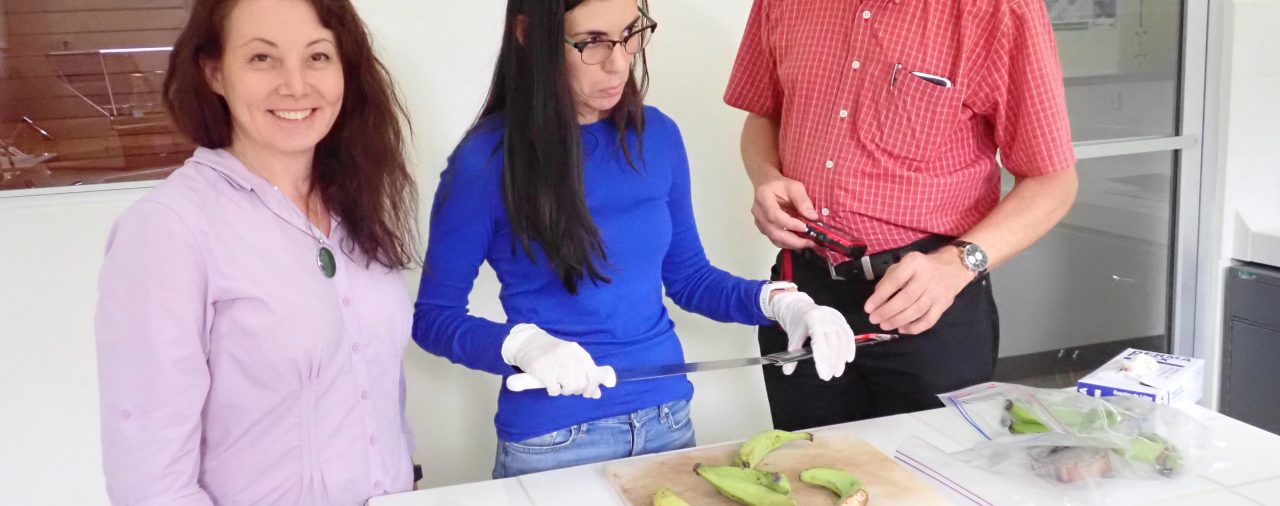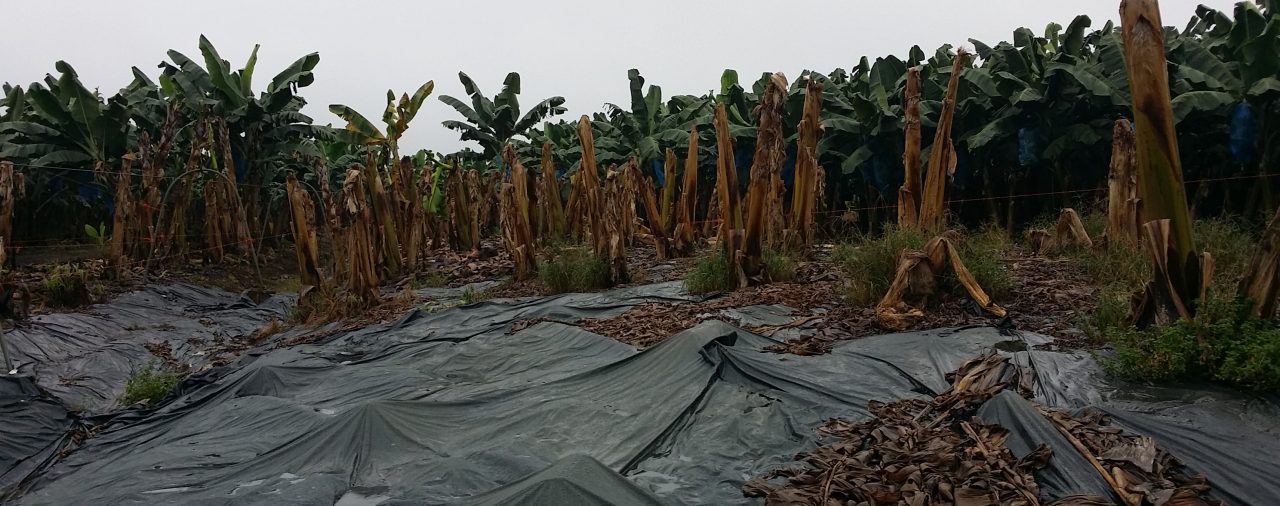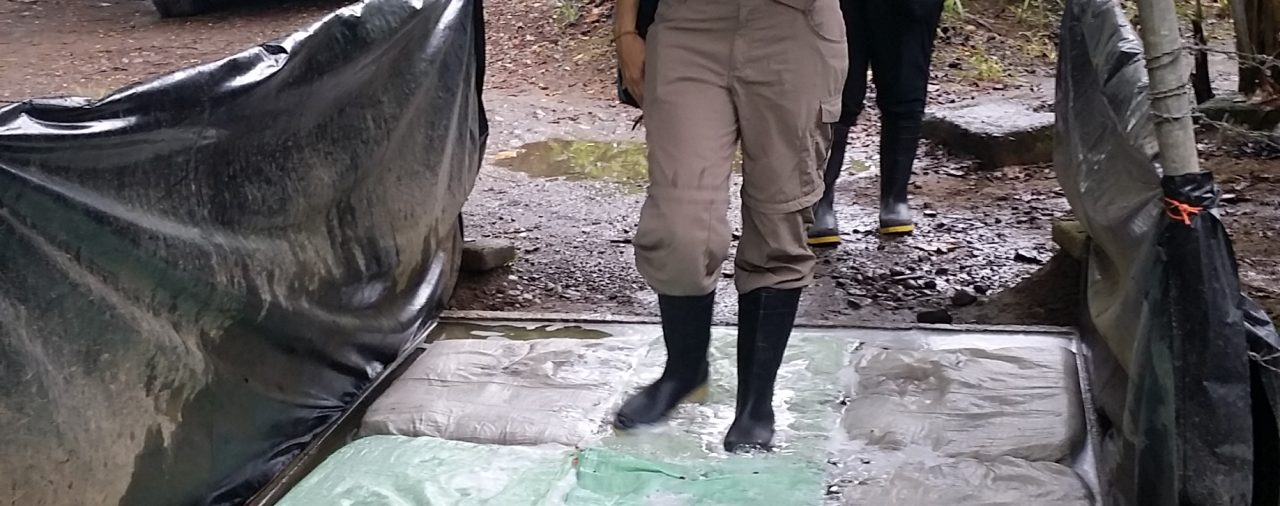By Professor Andre Drenth
Bananas are susceptible to three important bacterial wilt diseases that reduce productivity and quality.
These diseases are Moko, blood disease and banana Xanthomonas wilt and they all cause similar symptoms of leaf wilting, vascular discoloration and fruits that remain green on the outside with rotten, discoloured inedible pulp.
Moko disease originates from South and Central America and has also been recorded in the Caribbean Islands, the Philippines and Malaysia; whilst banana blood disease originates from Indonesia and Xanthomonas wilt is present in Africa.
These three bacterial wilt diseases are absent from Australia and are of significant biosecurity concern to the Australian banana industry.
The banana diagnostic team working on Hort Innovation project BA16005 “Strengthening the banana industry diagnostic capacity”, under the leadership of Prof André Drenth, travelled to Costa Rica late last year to study the identification and management of Moko.
Travel was made possible through a Crawford Fund student award from the fund’s Northern Territory Committee to Jane Ray and a National Plant Biosecurity Diagnostics Network grant for Moko Diagnostic Protocol Development to Dr Lilia Carvalhais.
The team was hosted by Dr Luis Gómez Alpizar from the University of Costa Rica. In Costa Rica the team visited banana plantations, inspected Moko eradication sites, collected samples of symptomatic banana plants, isolated the bacterium causing Moko, examined cultural morphology and extracted DNA of the pathogen.
The National Banana Corporation of Costa Rica (Corbana) also provided DNA from their Moko culture collections. The DNA was brought to Australia under a quarantine permit and used to validate the molecular diagnostics and to act as positive controls for the diagnostics of Moko.
Comparing, photographing Moko disease in the field and documenting the difference between strains of Moko and blood disease provides valuable information for diagnosticians and help to speed up accurate diagnosis for the different banana bacterial wilts.
Gaining an understanding of methods used in Costa Rica to manage the disease in commercial banana plantations was enlightening and learnings can be applied to dealing with incursions of bacterial wilts. Moko disease is highly transmissible via tools, soil, water and insects.
To manage transmission in the field, farmers use multiple knives in sheathes that contain a liquid sanitiser to kill bacteria. They have footbath stations throughout the property, limit vehicle use and remove the male bel on the banana to prevent insect transmission.
During our visit to Costa Rica we found that Moko disease is endemic, but highly regulated and is a notifiable disease managed by Corbana. Suspect outbreaks are required by law to be reported and are subsequently managed according to a specific protocol.
Symptomatic plant samples are collected, the causal organism isolated then verified using molecular diagnostics. Once confirmed specific eradication procedures are followed including quarantine of an area around a diseased plant of 6 x 8m, removal of bananas / injection of Glyphosate, covering with plastic for 20 days and fumigation and fallow for another 30 days, prior to replanting.
Due to the tight quarantine around Moko disease in Costa Rica there were not many active cases of Moko disease in commercial banana plantations at the time of our visit.
However, it is important to realise that this has not always been the case and low incidence is only achieved through ongoing strict adherence to hygiene and tool sanitisation protocols and early detection and intervention through local eradication.
During our visit we also had discussions with Dole and Fyffes and visited Earth University which have their own banana plantation. We gave several seminars concerning emerging banana diseases in Southeast Asia, notably banana blood disease and Fusarium wilt TR4 as part of establishing collaborations and information exchange.
The first-hand experience with Moko disease symptoms in the field, disease management, improved isolate collection and knowledge of cultural morphology has improved our knowledge of this disease. The molecular diagnostics carried out upon our return to Australia as part of this study has highlighted some deficiencies in currently reported diagnostic protocols.
With this information, we are now developing more robust diagnostics to improve incursion preparedness. Accurate and robust diagnostics will speed definitive identification while insight into management of the disease gleaned from overseas experience will significantly improve management and eradication options for bacterial wilt diseases in banana such as Moko and blood disease in Southeast Asia and Australia.

